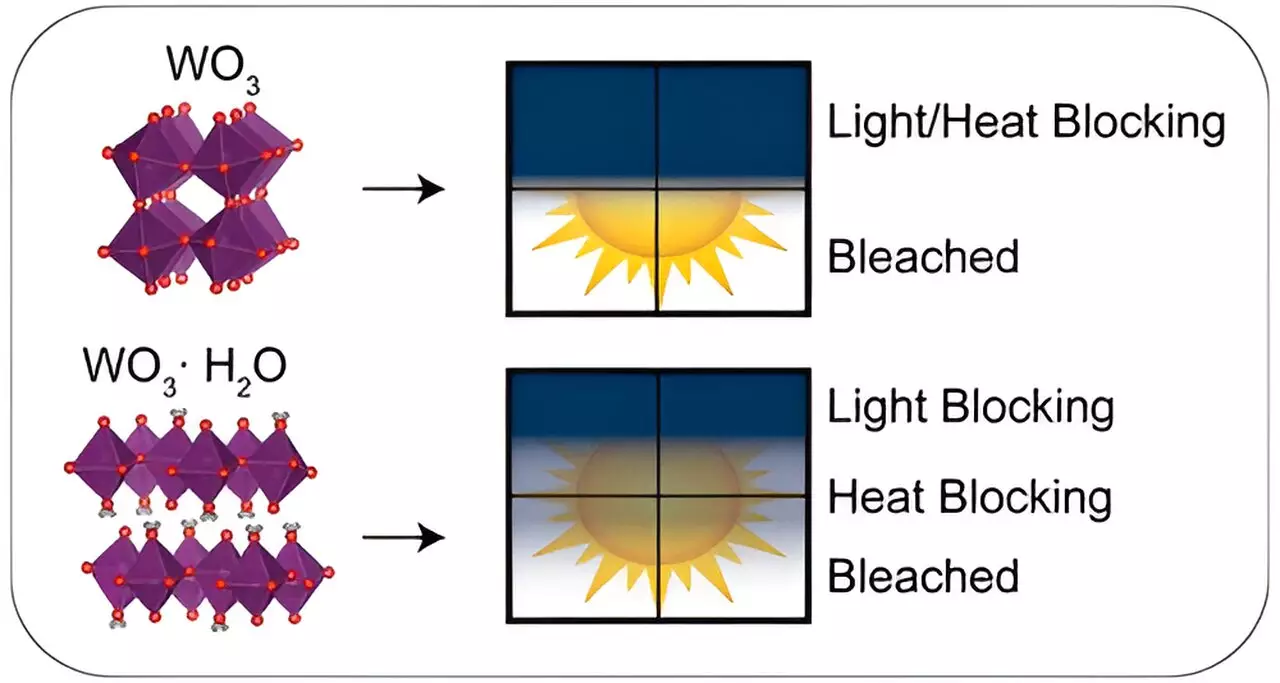Dynamic windows have the potential to revolutionize the way we think about and utilize windows in buildings. These windows are designed to switch between three modes: transparent, infrared-blocking, and tinted. While electrochromic dynamic windows are not a new concept, a recent breakthrough has expanded the capabilities of these windows to offer more options for building occupants. In this article, we will explore the exciting research that has led to this breakthrough, and discuss the potential implications for energy efficiency in buildings.
Traditionally, dynamic windows were limited to either being clear or dark. However, researchers at North Carolina State University have discovered a way to introduce additional modes into these windows, allowing for a more versatile and energy-efficient solution. By incorporating water into the crystalline structure of a tungsten oxide, the researchers were able to create a material that exhibits dual-band electrochromism.
Water plays a crucial role in the functionality of these new dynamic windows. When water is bound within the crystalline structure of a tungsten oxide, the material undergoes a previously unknown behavior. Tungsten oxide, a commonly used material in dynamic windows, is typically transparent. However, when an electrical signal is applied, and lithium ions and electrons are injected into the material, it becomes dark and blocks light.
The key discovery by the researchers is that by introducing water into the crystalline structure, the material becomes more resistant to deformation when lithium ions and electrons are injected. This allows for the tuning of the wavelengths of light that are blocked, effectively creating two distinct modes in the dynamic windows.
One of the exciting aspects of this breakthrough is the potential for enhanced energy efficiency in buildings. By utilizing the “cool” mode of these dynamic windows, buildings can allow visible wavelengths of light to pass through while blocking infrared light. This helps to keep the building cooler, reducing the need for energy-intensive cooling systems.
Furthermore, when the windows transition into the “dark” mode, both visible and infrared wavelengths of light are blocked. This has the potential to significantly reduce glare, while still maintaining a clear view. This not only enhances occupant comfort but also reduces the need for artificial lighting, leading to even greater energy savings.
The discovery of dual-band light control in a single material has immense implications for the future of dynamic windows. This breakthrough may accelerate the development of commercial products with enhanced features. By allowing for greater control over the transmission of light, these dynamic windows can revolutionize the way we design and construct buildings.
Improved energy efficiency is a significant advantage of dynamic windows. The ability to selectively block infrared light while maintaining visible light transmission can lead to substantial energy savings in cooling systems. Additionally, the reduction in glare and the need for artificial lighting can further contribute to energy efficiency in buildings.
The recent breakthrough in dynamic window technology opens up new possibilities for the future of building design. The incorporation of water into the crystalline structure of tungsten oxide has allowed for the creation of dual-band electrochromic windows. These windows offer building occupants the ability to switch between transparent, infrared-blocking, and tinted modes, providing greater control over light transmission.
The enhanced energy efficiency of these windows has the potential to significantly reduce the environmental impact of buildings and lower energy costs. With continued research and development, dynamic windows may become a standard feature in buildings, improving occupant comfort and sustainability. The future of dynamic windows is bright, and it is exciting to imagine the possibilities that this breakthrough will unlock.


Leave a Reply